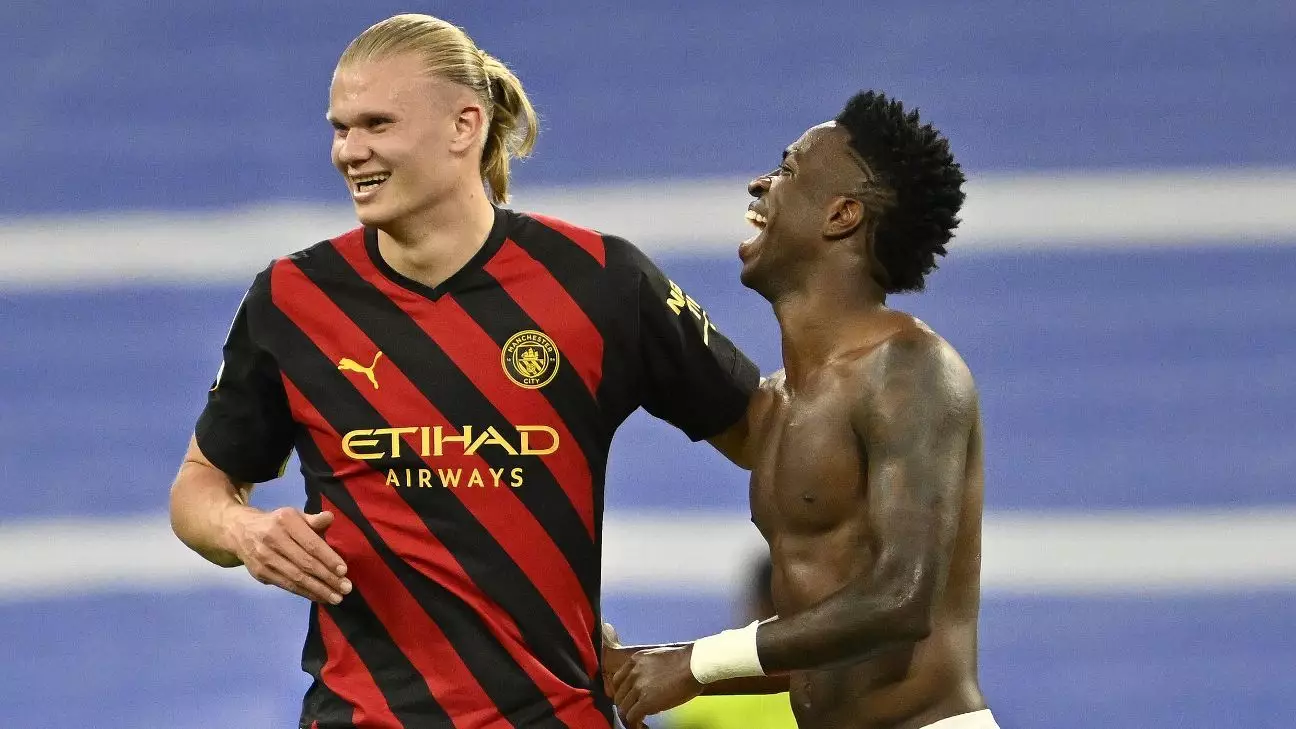As Real Madrid grapples with the potential departure of Vinícius Júnior amid substantial interest from the Saudi Pro League, it appears that the Spanish giants are setting their sights firmly on Manchester City’s sensational striker, Erling Haaland, as a potential replacement. This strategic maneuver could not only reshape the team’s attacking prowess but also illustrates a significant shift in Madrid’s transfer philosophy — one that aims to infuse youthful talent while also maintaining dominance in European football.
Haaland’s remarkable scoring record has made him one of the hottest properties in world football. Having signed a record-breaking 9½-year deal with City, his future is somewhat uncertain, particularly in light of ongoing investigations into the club’s financial practices. If the Premier League leaders find themselves embroiled in severe penalties, Madrid could view the opening as an opportune moment to pounce. Such a move would enable the club to not only secure a world-class talent but also facilitate Kylian Mbappé’s transition to a more versatile role on the left flank. The alignment of two of football’s brightest stars could manifest a new attacking framework that may leave their rivals reeling.
Defensive Reinforcements: The Search for Solidarity
In tandem with bolstering their frontline, Real Madrid is laying the groundwork for crucial defensive enhancements. Reports indicate that Ibrahima Konaté of Liverpool, potentially entering a contract stalemate, has emerged as a priority target. The LaLiga side’s commitment to reinforcing their backline reflects a broader understanding of the evolving dynamics of modern football—one where defensive stability can be just as critical as an explosive attack.
Konaté’s physicality and agility make him an appealing prospect, especially considering Madrid’s struggles against pacey counter-attacks in recent seasons. The synergy created by merging the talents of the young Frenchman with an already well-established backdrop gives Madrid a realistic chance to regain their place as a defensive powerhouse in Europe. The pursuit of Konaté also indicates a strategic focus on capitalizing on contractual uncertainties in a market where many clubs are cautious about overspending.
Moves on the Periphery: Other Notable Interests
The ripple effect of Real Madrid’s transfer ambitions extends beyond the marquee names. Clubs throughout Europe are also eyeing their own targets, with crystal clear implications for the football hierarchy. Crystal Palace’s monitoring of Marcus Rashford, who is on loan at Aston Villa, signifies a broader trend wherein mid-tier clubs are battling for players typically deemed beyond their reach.
Rashford’s situation embodies a multifaceted dilemma for Manchester United. The Red Devils are facing the possibility of losing a key player — a scenario mirrored by Tottenham’s own struggles to retain established stars. Each movement in the player transfer market compounds the tension, reminding us that the football world thrives on chaos and opportunity.
Parallel to Rashford’s situation, Arsenal appears to be making headway in contract negotiations with Bukayo Saka, emphasizing the importance of retaining emerging talent. The prospect of Saka remaining at the Emirates until 2030 not only underscores Arsenal’s commitment to youth but also adds to the narrative of clubs attempting to turn the tide on poaching by re-engaging their own stars.
The Italian Challenge: Hernández’s Future at AC Milan
Not every player is as keen to leap into the lucrative arms of the Saudi Pro League — a point made evident by Theo Hernández’s expressed desire to remain with AC Milan. The Italian side’s ongoing contract discussions reflect an understanding that stability and familiarity can outweigh financial incentives, particularly for players entering a pivotal phase in their careers.
Hernández’s situation brings forth an essential conversation about the diverging paths players may take in their careers. While some are lured by the prospect of substantial earnings abroad, many continue to see value in consistency and growth within established clubs.
The future landscape of football transfer dynamics is a rich tapestry of evolving player values, rising talent, and shifting power structures. As clubs maneuver through the complexities of contracts and interest, the excitement and unpredictability of upcoming transfer windows become ever more captivating, foreshadowing a dramatic reshaping of the football world.

